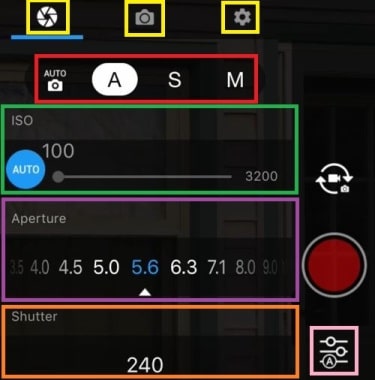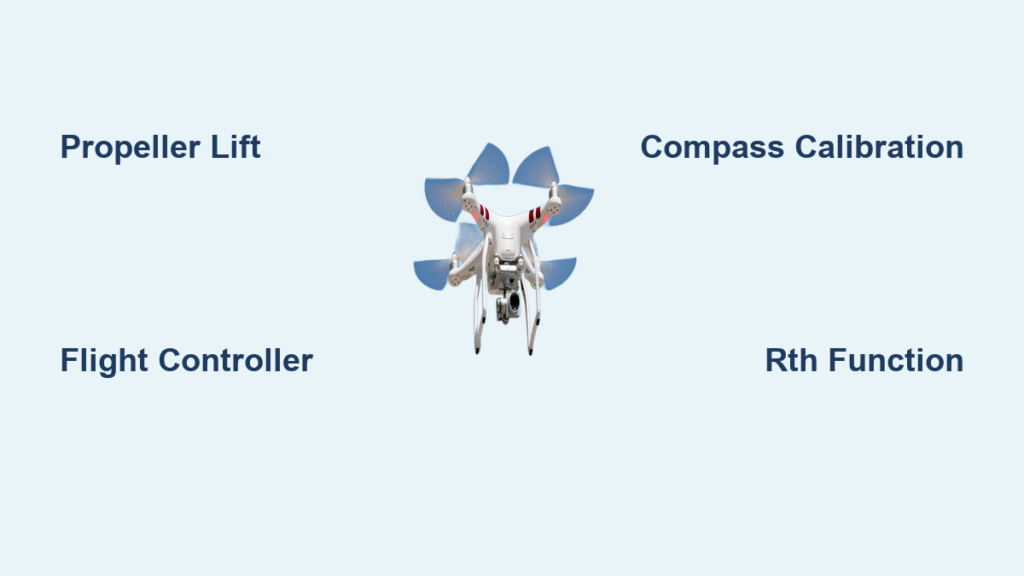Flying your drone after dark unlocks cinematic cityscapes, star trails, and moody long-exposure footage—until a single mistake triggers the FAA’s $75,000 fine hammer. Since April 2021, night flights are legal for all pilots, but only if you nail four non-negotiable requirements: compliant strobes, current training, Remote ID, and strict VLOS adherence. One skipped step—like using blue lights or forgetting your recurrent course—invalidates your entire flight. This guide cuts through the confusion with battle-tested procedures, gear hacks, and camera settings used by professional night operators. You’ll learn exactly how to pass FAA scrutiny, avoid invisible hazards, and capture gallery-worthy night imagery without risking your certificate.
Avoid $75K FAA Fines: Night Flight’s 4 Non-Negotiable Requirements
Night legally begins 30 minutes after sunset and ends 30 minutes before sunrise—no exceptions. During this window, both commercial and recreational pilots must satisfy these four requirements every single flight. Forget waivers; the old Part 107.29 process is gone. Your compliance checklist is simpler but zero-tolerance:
- Anti-collision lights: Red or white strobes visible for 3 statute miles flashing 40–100 times per minute. Solid LEDs or decorative strips fail instantly.
- Training: Part 107 pilots certified before April 2021 need the FAASTeam recurrent course. Recreational flyers must complete CBO briefings (AMA/FPV Freedom Coalition).
- Remote ID: Your drone must broadcast location or operate within a FAA-Recognized Identification Area (FRIA).
- VLOS maintenance: You must see your drone unaided by technology—not just its lights—at all times.
Ignoring any item risks immediate fines. The FAA recently fined a real estate photographer $48,000 for using a solid white LED strip instead of a strobe.
Why Your Anti-Collision Lights Fail FAA Inspections (And How to Fix It)

Most night flight violations stem from non-compliant lighting. FAA inspectors reject strobes that miss even one specification:
- Flash rate traps: Record your strobe in 120fps slow-mo for 10 seconds. If you count fewer than 7 or more than 17 flashes, it’s illegal. Many DIY mods fail here.
- Color confusion: Blue or green lights mimic aircraft position lights—never use them. Stick to certified red/white models like LumeCube Strobe or Firehouse ARC V.
- Mounting mistakes: Bottom-mounted strobes get obscured by the drone body. Always mount on top for maximum visibility to manned aircraft.
- Range deception: Don’t trust manufacturer claims. Test visibility with a helper at 3 miles line-of-sight. Fog or humidity can cut range by 50%.
Pro Tip: Carry a spare strobe Velcroed to your battery door. Cold weather drains power fast—test your lights for 1.5x your planned flight time.
Recurrent Night Training: Fast-Track Your FAA Compliance
Your certification date dictates your training path—no shortcuts allowed.
For Part 107 Pilots Certified Before April 21, 2021
- Log into faasafety.gov
- Complete the free “Part 107 Night Operations” recurrent course (45 minutes)
- Download and save your certificate—digital copies in your flight bag are mandatory
Skipping this? Your certificate becomes invalid for night ops. The FAA suspended one pilot’s license for 90 days after finding an expired training record during a routine inspection.
For Newer Pilots (Certified On/After April 21, 2021)
You already passed night operations in your initial exam—no extra course required. But take the voluntary FAASTeam refresher. It covers critical updates like thermal sensor limitations and spatial disorientation fixes.
Recreational flyers: Complete the AMA night-flying module and carry the printed checklist. FPV Freedom Coalition offers free webinars with FAA liaisons.
Scout Flight Zones in Daylight: Avoid Invisible Wires at Night
Flying blind in the dark is how drones become wire magnets. Always scout sites in daylight using this protocol:
- Map hidden obstacles: Drop GPS pins for power lines, cell towers, and tree canopies. In darkness, wires vanish against black skies.
- Identify glare zones: Note street lamps and reflective signs. Adjust takeoff angles to prevent camera lens flare or disorientation.
- Check wind shifts: METAR/TAF reports reveal nighttime temperature drops that cause sudden gusts. Flag areas where cold air drains into valleys.
- Mark safe zones: Tape a 10-meter debris-free circle for launch/recovery. Rocks or twigs become invisible hazards under strobes.
I once saw a Phantom 4 Pro crash because its pilot missed a guy-wire during twilight scouting. It cost $1,200 in repairs—and a near-miss report to the FAA.
Essential Night Flight Gear: Red Headlamps and Backup Strobes

Your daylight kit won’t cut it. Pack these night-specific items:
| Gear | Critical Purpose | Pro Hack |
|---|---|---|
| Red headlamp | Preserves night vision | Set brightness below 0.3 lux to avoid white-light leaks |
| Two strobes | Primary + emergency backup | Tape one to spare batteries |
| Ground LEDs | Illuminates landing zone | Angle at 45° to eliminate harsh shadows |
| Visual observer | Maintains legal VLOS | Brief them on 180° horizontal + vertical scan patterns |
| Insulated battery pouch | Prevents cold-snap drain | Store spares against your chest during flight |
Never use white headlamps—they destroy your and your VO’s night vision within seconds.
7-Step Pre-Flight Checklist for Night Drone Safety
Run this sequence before every launch. Skip one item, and your flight is illegal:
- Battery check: Full charge on main + spare. Below 10°C? Use cold-weather packs—expect 20% faster drain.
- GPS lock: Confirm ≥8 satellites. Set RTH altitude 30 meters above your tallest obstacle (not AGL).
- Sensor wipe: Clean obstacle-avoidance lenses with microfiber cloth—dust scatters IR beams in darkness.
- Geofence limit: Cap distance at 150–200 meters. Beyond this, VLOS becomes impossible.
- Strobe verification: Power on, test flash rate via phone slo-mo.
- Remote ID confirmation: Check broadcast status via app or FRIA map.
- Log sheet completion: Note location, strobe serial number, VO name, and weather.
Bold warning: Cold batteries lie. A “100%” indicator at 0°C may drop to 60% in 2 minutes.
Fix Spatial Disorientation: In-Flight Night Flying Adjustments
When ground lights blur into a disorienting sea of points, these moves save your drone:
- Instrument over instinct: Stare at your HUD’s horizon line—not external lights—for 3 seconds every 10 seconds. Your eyes lie in darkness; the gyroscope doesn’t.
- Add downward LEDs: Clip 20-lumen lights to the drone’s belly. Seeing ground texture restores depth perception instantly.
- Battery buffer: Trigger RTH at 25% battery (not 30%). Cold air increases power draw by 15%.
- Noise reduction: Fly ≥50 meters above homes with low-noise props. Nighttime noise complaints spike 300%.
One cinematographer avoided a crash by remembering this: When disoriented, hover immediately—don’t chase the drone.
Manual Camera Settings for Night Shots: ISO, Shutter, and White Balance

Auto mode murders night footage. Dial in these settings for pro results:
| Setting | Value | Why It Works |
|---|---|---|
| Aperture | Widest (f/2.8–f/4.0) | Maximizes light capture in dark scenes |
| ISO | 1600–6400 | Higher values brighten footage but increase noise—clean later in Lightroom |
| Shutter | 1–4 seconds | Creates light trails; lock gimbal to prevent blur |
| Focus | Manual → ∞ | Autofocus hunts endlessly in low light |
| White balance | 4000–5000K | Neutralizes orange streetlight casts |
Critical: Shoot RAW. JPEGs crush shadow detail—recovering a dark building facade becomes impossible.
7 Costly Night Flying Errors: From Solid LEDs to Cold Batteries
Avoid these FAA trapdoors:
- Decorative LED strips – They look cool but fail strobe requirements.
- White headlamps – Ruins night vision for you and your VO.
- Skipping daylight scouting – Wires and towers are invisible at night.
- Cold battery surprise – Expect 20% shorter flight times below 10°C.
- Trusting obstacle sensors – IR range drops 40% in darkness.
- “I see the lights = VLOS” – Legally, you must see the drone body, not just lights.
- Dead Remote ID battery – Some modules last under 90 minutes; charge them pre-flight.
A wedding photographer lost $8,000 in gear when his drone hit a tree he’d missed during daylight scouting.
Post-Flight Night Ops: Lens Cleaning and Insurance Checks
Night flying demands unique maintenance:
- Strobe lens cleaning: Wipe with isopropyl alcohol + microfiber cloth monthly. Dust buildup cuts visibility by 30%.
- Firmware verification: After updates, re-test flash rates—some corrupt strobe calibration.
- Insurance audit: Confirm your policy covers night operations. Many standard policies exclude dusk-to-dawn.
- Annual SOP refresh: Re-brief your team on new FAA guidance. Rules evolve faster than drone firmware.
Printable Night Flight Checklist: 11 Boxes to Tick Before Launch
Download, laminate, and verify these before every flight:
| Step | Status |
|---|---|
| Daylight site survey complete | ☐ |
| Strobe: ≥3 SM visibility, 40–100 bpm | ☐ |
| Remote ID broadcasting confirmed | ☐ |
| Training current (FAASTeam/CBO) | ☐ |
| LAANC/ATC authorization secured | ☐ |
| ≥2 batteries at 100% charge | ☐ |
| RTH altitude +30m above obstacles | ☐ |
| Visual observer briefed & positioned | ☐ |
| Red lighting only at ground station | ☐ |
| Weather & NOTAMs checked | ☐ |
| Flight log sheet completed | ☐ |
With compliant strobes, current training, and this checklist, you’ll transform night flights from risky gambles into your most breathtaking work. The FAA isn’t trying to ground you—they’re ensuring you come home safely to fly again. Now go capture the darkness.



